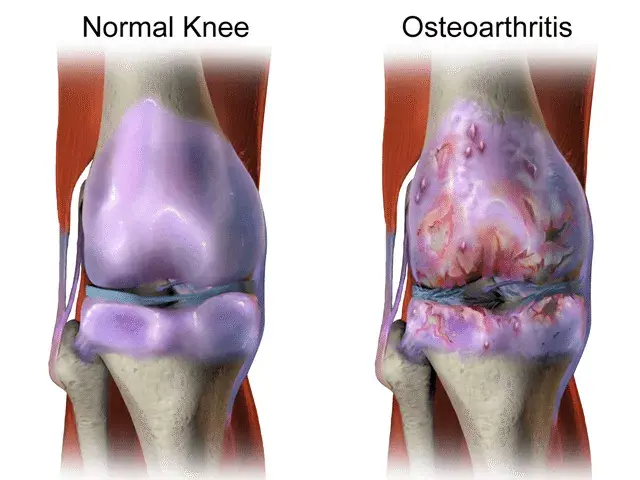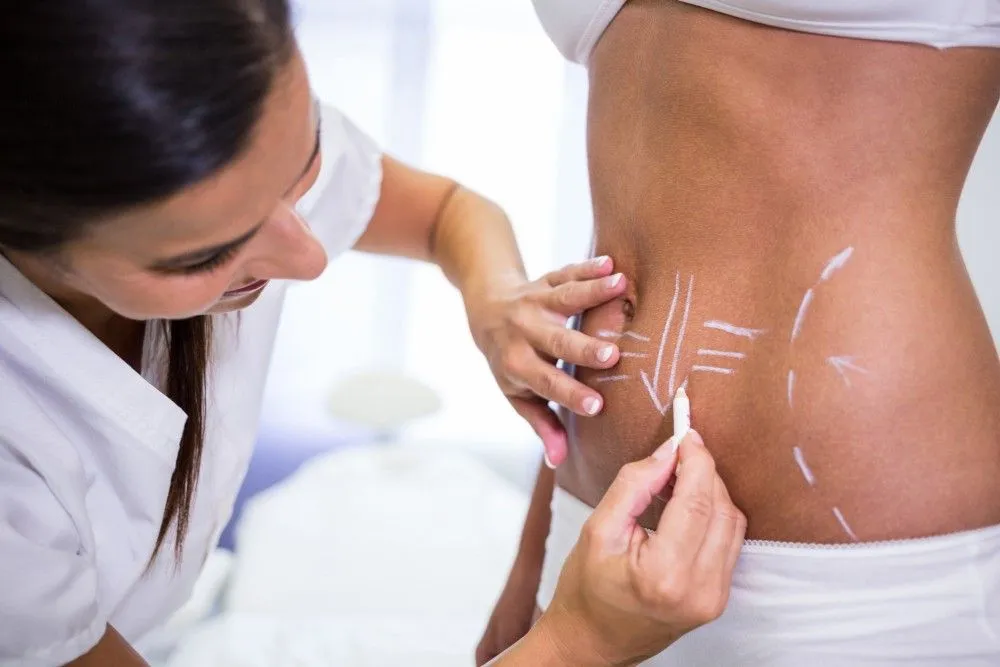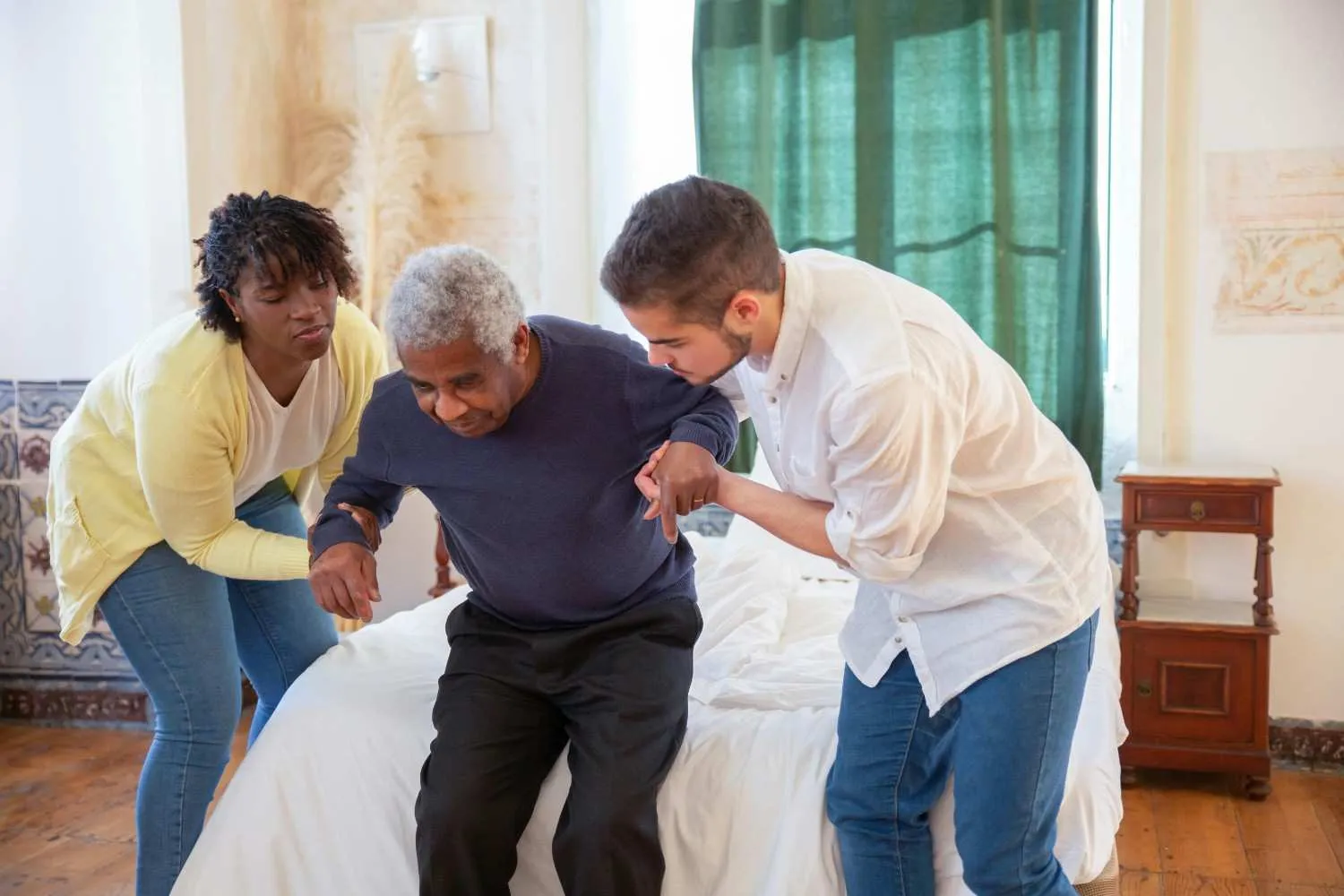Knee replacement surgery, also known as arthroplasty, is the process of recreating a complete knee by replacing the damaged knee cap with artificial plastic material that is conjoined with the existing knee cap portion to completely cover the joint area. The surgery is conducted by an experienced orthopedic surgeon and involves intricate bone recreation processes if the knee has been damaged in an accident with injuries to the thigh or leg bones. The captella or knee cap is mainly restructured in the surgery using a knee prosthesis which is made up of a combination of metal and plastics.

What are the reasons for a Knee Replacement Surgery?
There are two main physical reasons that lead to a knee replacement surgery -
 The first reason is acute osteoarthritis which leads to drying up of the cartilage and partial damage to its structure as a knee cap. This degenerative disease slowly eats away at the original complete structure of the knee joint and therefore, requires knee replacement surgery to fight the condition. Acute cases of osteoarthritis may require resurfacing of thigh or leg bones damaged by the disease. In such cases, the surgeon restructures the joint area by conjoining artificial and original parts to create complete bones and knee cap. In addition to osteoarthritis knee, rheumatoid arthritis and post traumatic arthritis.
The first reason is acute osteoarthritis which leads to drying up of the cartilage and partial damage to its structure as a knee cap. This degenerative disease slowly eats away at the original complete structure of the knee joint and therefore, requires knee replacement surgery to fight the condition. Acute cases of osteoarthritis may require resurfacing of thigh or leg bones damaged by the disease. In such cases, the surgeon restructures the joint area by conjoining artificial and original parts to create complete bones and knee cap. In addition to osteoarthritis knee, rheumatoid arthritis and post traumatic arthritis.
The second reason that leads to knee replacement surgery is accidental damage to the knee area which may be caused by falls or crashes. Old people are specially susceptible to falls down the stairs or on slippery floors and suffer broken knee joints or knee caps. Acute knee injuries also occur in automobile crashes where many injured parts of the knee joint are removed and replaced with artificial prosthesis.
Read more - Should You Get a Knee Replacement Surgery?
What are the important tests before a Knee Replacement surgery?
The following tests are most important before a knee replacement surgery is scheduled.- X-Ray Evaluation: The injured knee must be evaluated using X ray studies from all axes to help the surgeon determine the extent of damage to the joint. Multiple X ray reports also help the orthopedic determine any abnormalities in joint shape and structure by comparing with X rays of the other knee joint.
- Blood Tests: These include pathology based tests to determine tolerance in your body and detect any chances of infection causing organisms occurring in your blood. If any infection is detected, then treatment to remove the infection is completed before the surgery is scheduled.
- Other Diagnostic Tests: These include check-ups of blood pressure, urine and stool tests, ad any specific test to allergies that may be required in specific cases.
- A Note: Any condition of hyper allergy or uncontrollable blood loss must be reported to the doctor before surgery. Appropriate measures must be taken to avoid the recurrence of such conditions in the patient during surgery.
- Physical Examination: Complete physical examination of the bone structure of the affected area and its surroundings. Specific pain related tests that include pricking and rubber hammering at specific points determine exact cause of pain and nerve condition. Ability to move the limb is tested to check seriousness of disability. Medications prescribed to correct the condition are checked to see if working. Remember to ask all your questions before knee replacement surgery.
How is a Knee Replacement Surgery Done?
The patient is asked to change into an operating gown and lie down on the operating table. An IV line is administered on his arm. The skin over the injured knee is thoroughly cleaned with sterilised cotton to remove all chances of infection. Anaesthesia is administered and the heart rate, blood oxygen level, blood pressure and breathing will be regularly monitored.
The surgeon makes a strategic incision above the joint area to part the upper layers of the skin and expose the knee joint. Damaged areas of the joint including parts of the knee cap and bones are removed.
Using a prosthesis that resembles the damaged knee cap and tibia and femural elements in shape, the knee cap is slowly recreated around the restructured tibia and the femur ends, thus completing the knee joint. The patellar portion, which is the lower end of the knee cap that rubs against the femur, is also restructured using prosthesis and this completes the entire knee joint. Parts of the bone that may have broken or chipped off due to accidental injuries are also recreated using similar prosthesis.
In most cases, cemented prosthesis, that attaches to the bone with a surgical cement, is used as it is more reliable than un-cemented prosthesis, that attaches to the bone surface using a porous surface. In rare cases, both versions of attachment in prosthesis are used. The incision is closed using surgical staples or stitches.
Also, read about: Genu Recurvatum.
What are the Complications?
Although knee replacement surgery is carried out in highly sterile and monitored conditions by experienced orthopaedic surgeons, there are chances of complications that may arise during or after the procedure. These include excessive bleeding of internal tissues or at incision point, infection at the incision, occurrence of blood clots in lungs or legs, prosthesis loosening or wearing out, fracture at the knee joint due to wrong placement or movement, chronic pain and stiffness at the operated area. In addition to these serious problems, the replacement knee joint might get dislodged or loosened after few days.
In cases of faulty placements, the knee joint may fail to function in the way it is expected to and may need to go through another surgery. During the operation, nerves and blood vessels around the area might be damaged and this could lead to numbness and weakness at the knee area. Knee pain and weakness in the operated area, that cannot be corrected through surgery, may require long term medication and physiotherapy.
What Post - Operative Care is Required?
Under the supervision of a trained physiotherapist, the patient is required to exercise and move the knee joint area. This process starts when you are admitted in the hospital after the procedure and continues even after you have been discharged and are at home. The physiotherapist monitors the improvement in muscle and nerve control at the new joint and reports in cases of any swelling or soreness.
The operated area needs to be kept dry and clean and at no cost should there be any external damage to the stitches. The doctor provides the patient with specific bath instructions and maintains the instructions till the staples or stitches are removed. Needless to say, the presence of moisture around the incision can lead to fluid accumulation and pus formation at the stitches which can increase chances of infection.
In case of swelling at the knee joint, the patient will be asked to raise his leg and apply ice packs. In case of soreness, a light dose of physiotherapy is advised and use of medication to obtain pain relief is allowed only to the extent that the medicines do not cause further bleeding. Therefore, aspirin and similar pain relievers are not prescribed in this condition.
Fever, redness, or pain at or near the incision point must be reported to the doctor immediately. It is also important to take steps to reduce chances of pneumonia occurring in the patient. Other post operative care includes use of cane or walker to assist in walking till balance and muscle control is achieved completely. Patient is asked to use handrails while climbing stairs and walking long distances and use shower benches and long handle sponges or showers to reduce bending at the knee area while bathing.
How Soon can a Patient Walk?
The patient can resume normal activities within three to six weeks after the surgery. The condition of the new knee joint is to be monitored closely and in the absence of any complications, the patient will be able to resume normal activities soon.How to Prevent the Replaced Knee Joint from Getting Damaged?
To avoid any further damage to the knee area the patient must walk very carefully after the operation. Remember, the new knee joint may get disturbed if there is a fall or odd movement and may require a second surgery to put back in place. Other tools that are recommended include:
- Long handled showers and sponges
- Shower benches or chairs and raised toilet seats to allow limited bending of the knee joint.
- Strong handrails along stairs and shower areas for safety of the patient while he moves.
- Dressing stick to help while changing
- Sock aid and a long-handled horn to avoid extra activity to the new knee joint caused by bending while wearing shoes or socks.
- Use of a reaching stick to grab/reach objects
- Removal of carpets that are loose and carelessly placed electrical cords that can cause the patient to trip
- Preventing stair-climbing unless it is recommended for you by your physiotherapist
Are there any Chances of an Infection?
Chances of infection are low and happen only in the case of moisture accumulation at the operated site. If there is soreness or extra bleeding or any other form of drain out from the operated site, then there are increased chances of infection and must be reported to the doctor immediately.

Reviewed by







